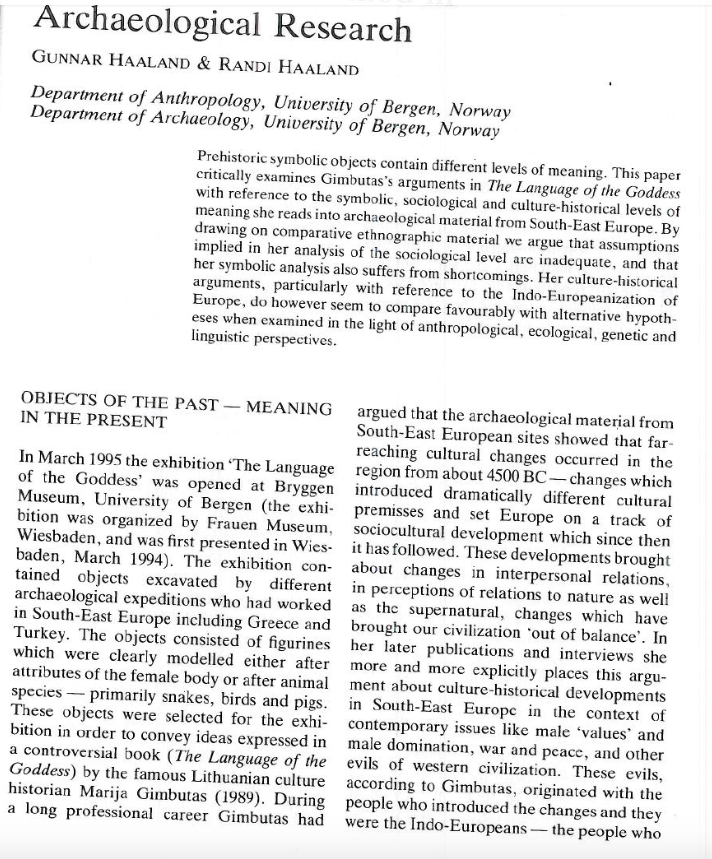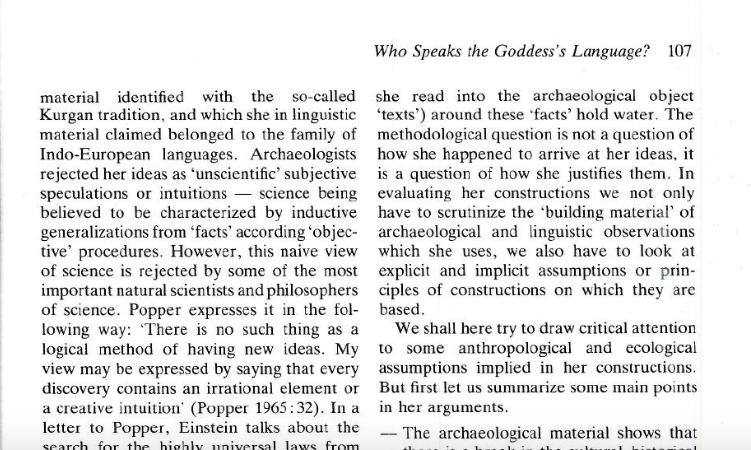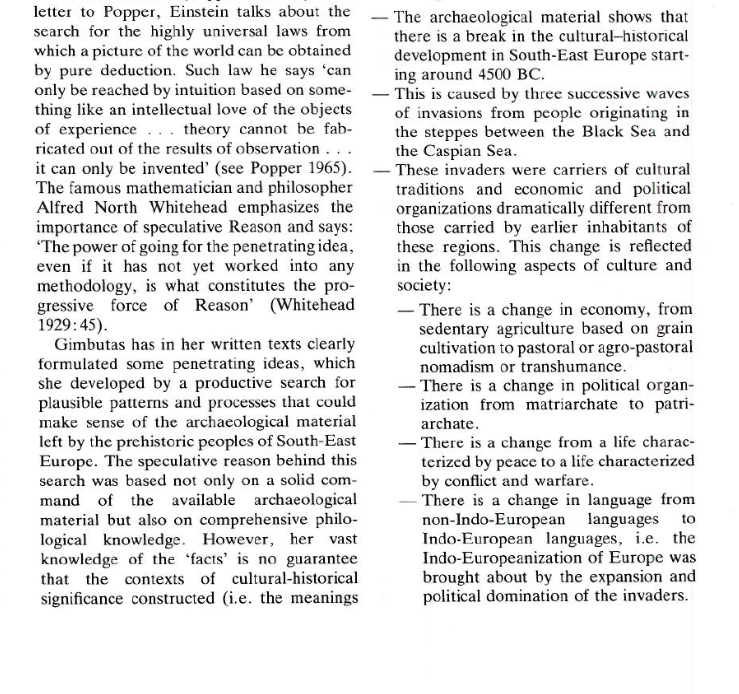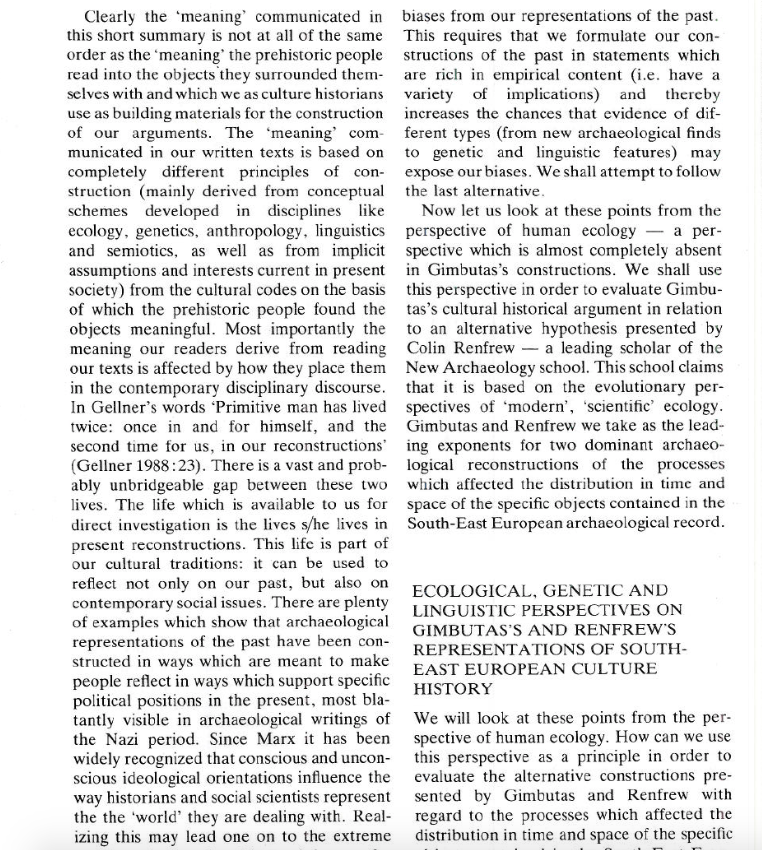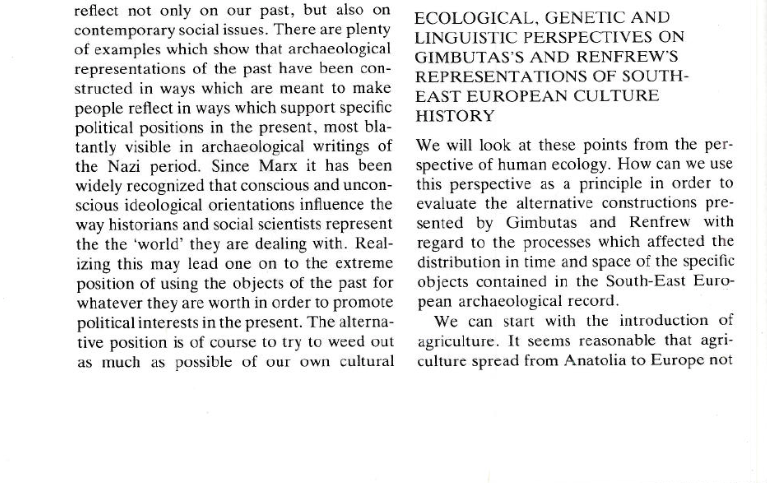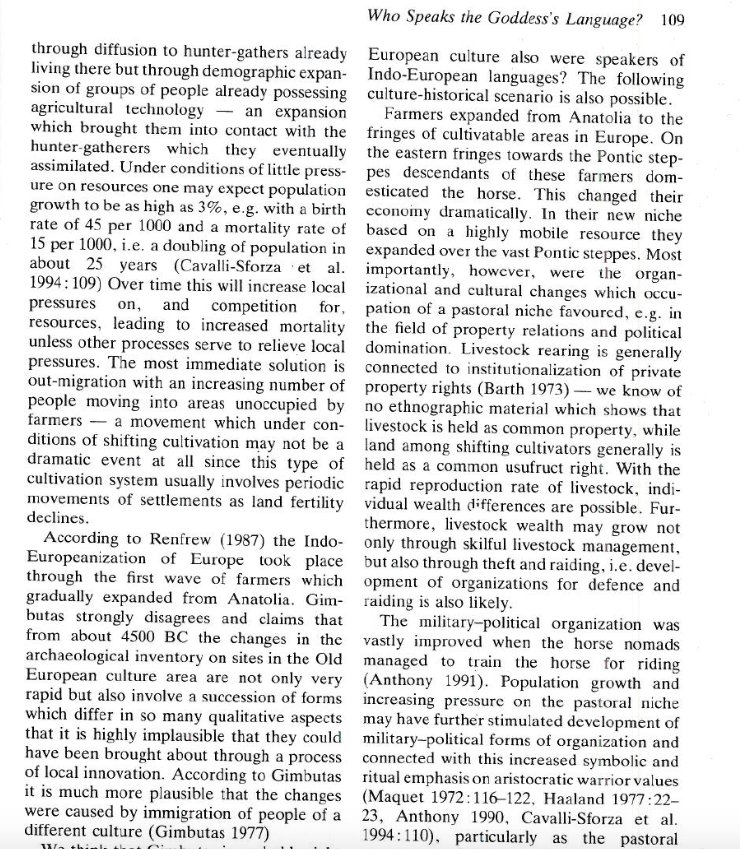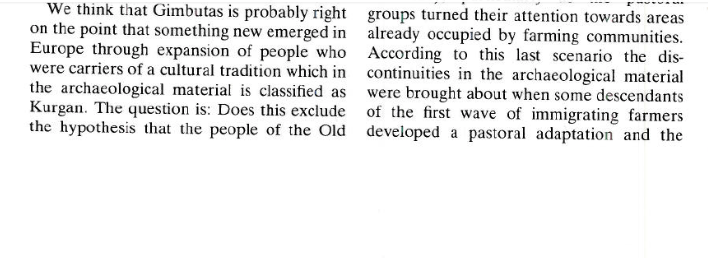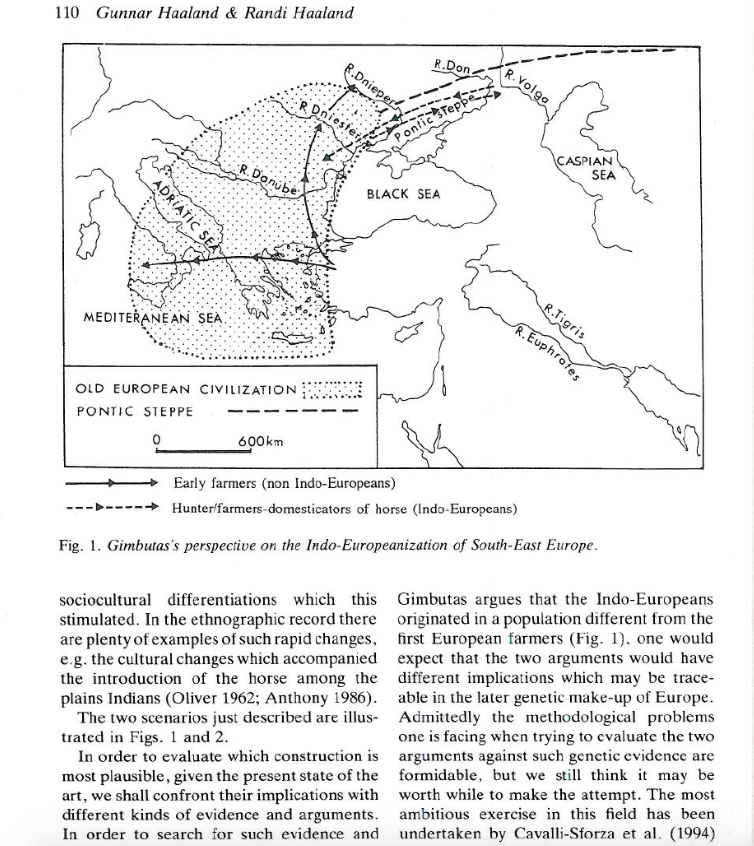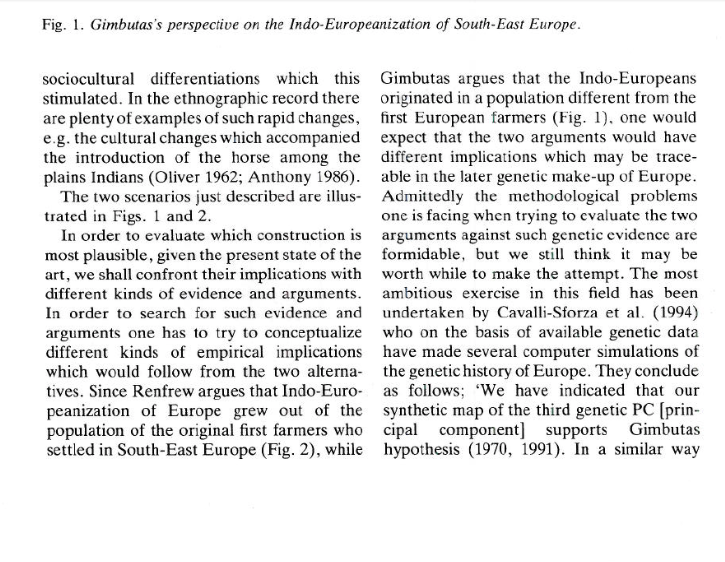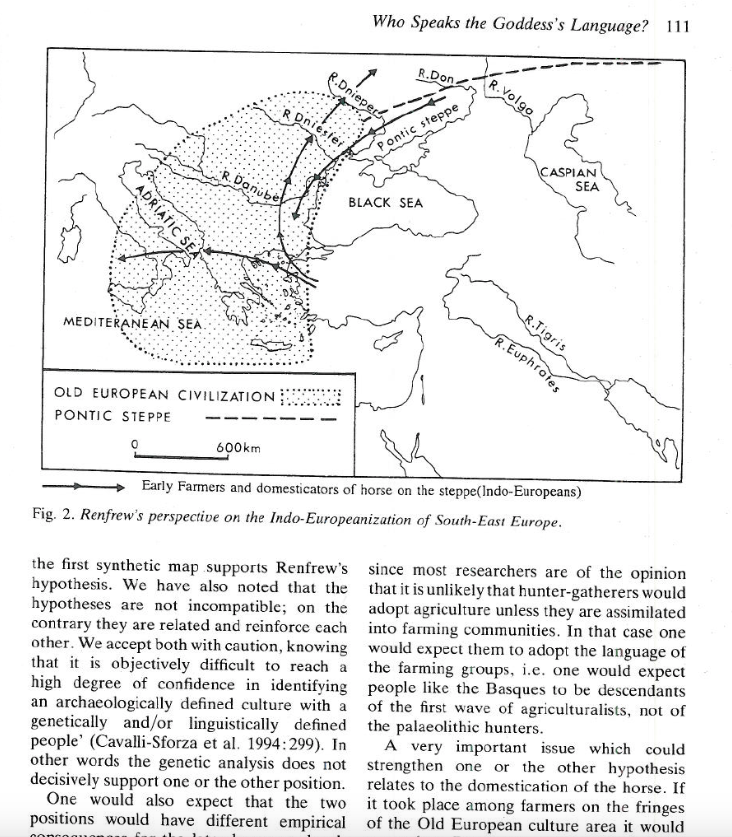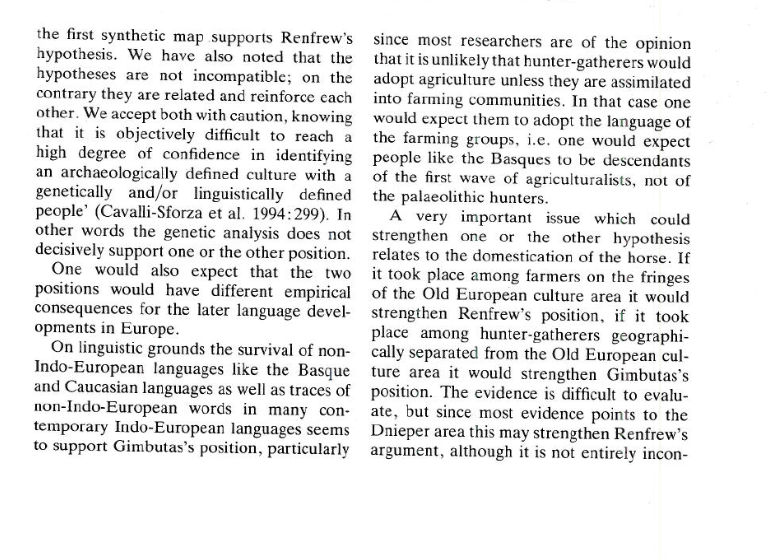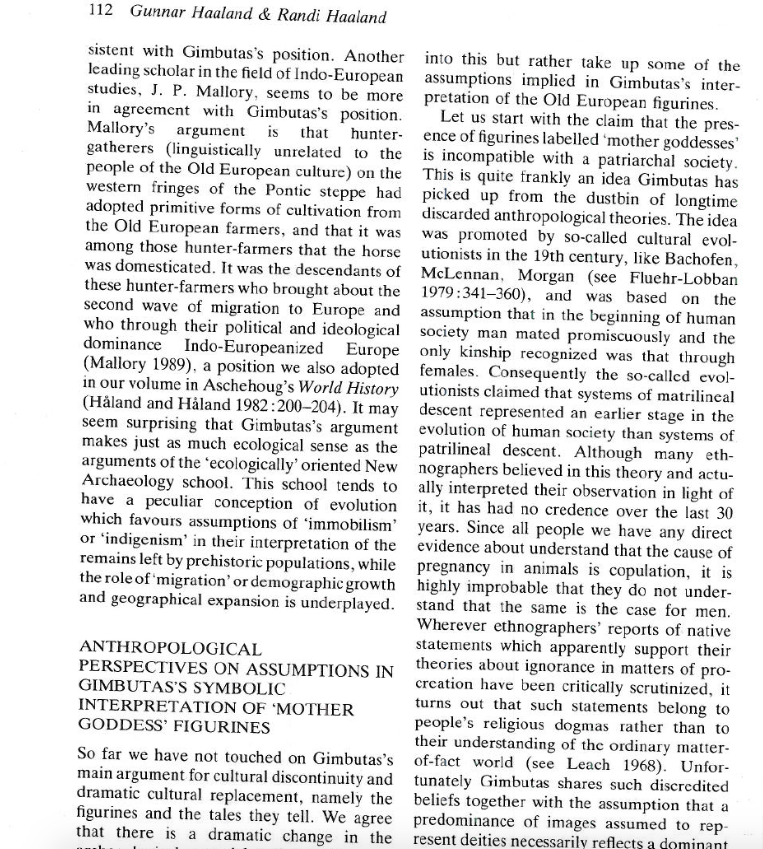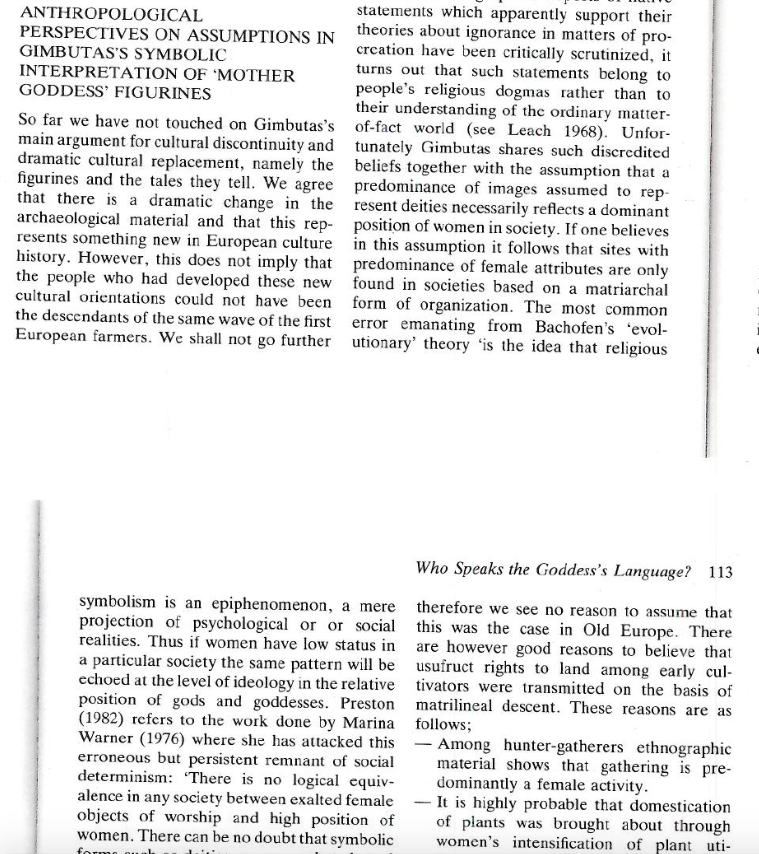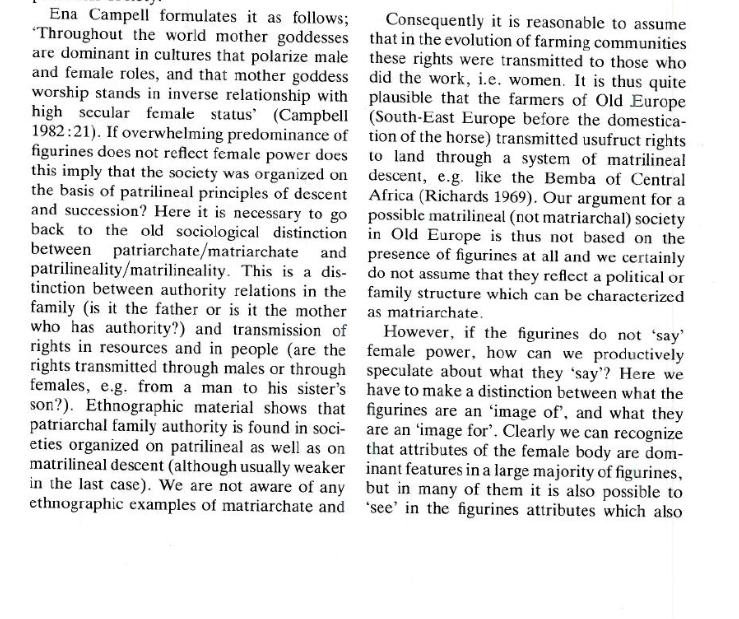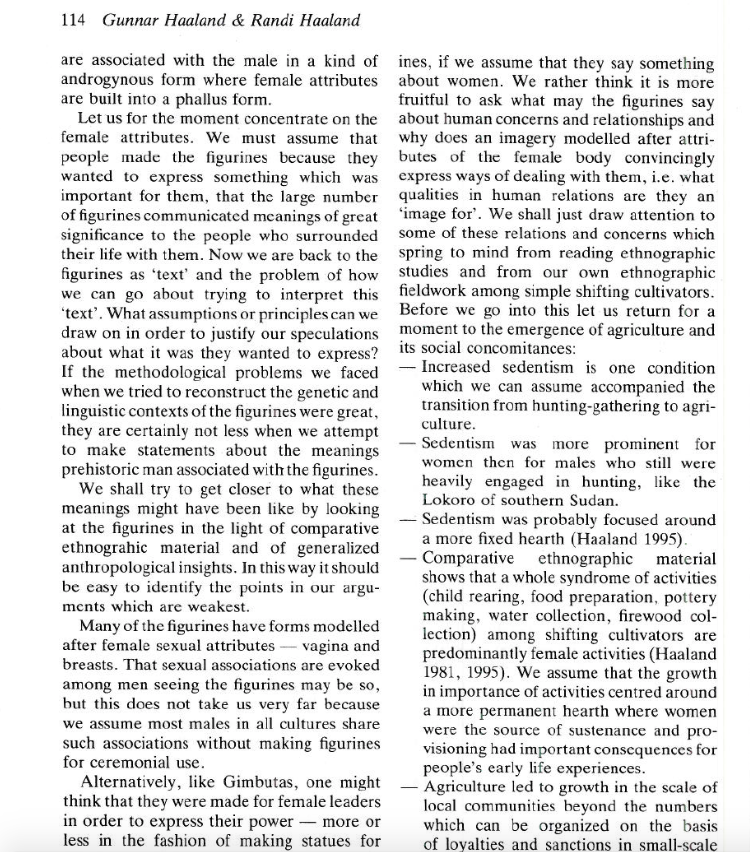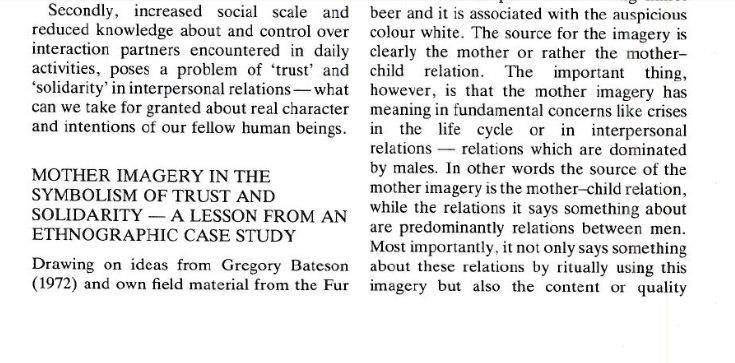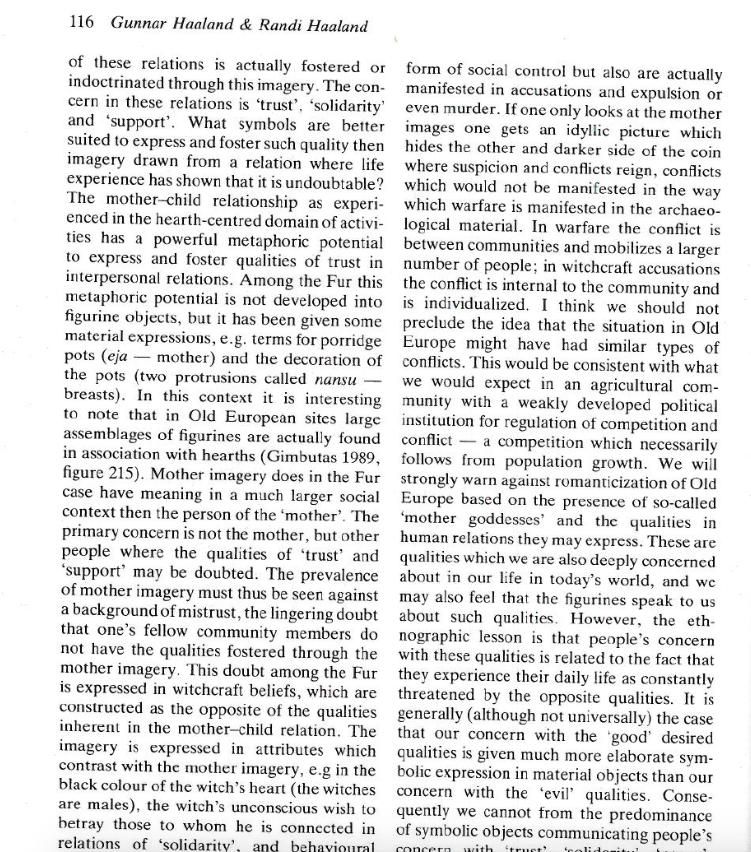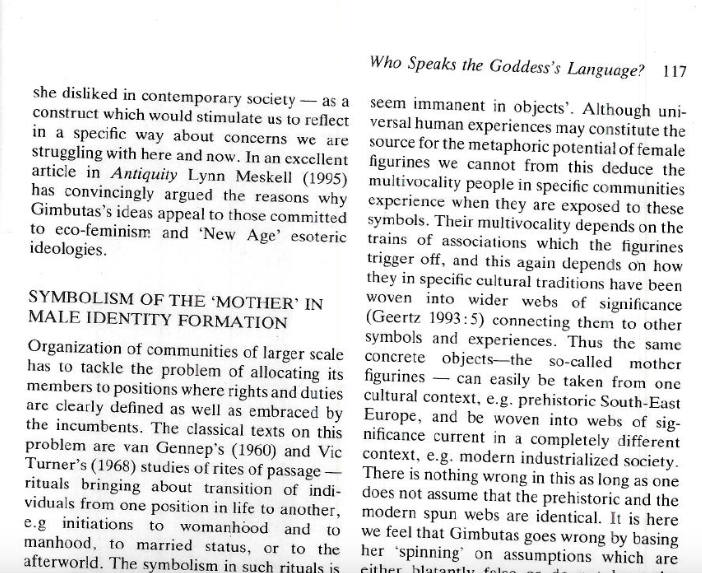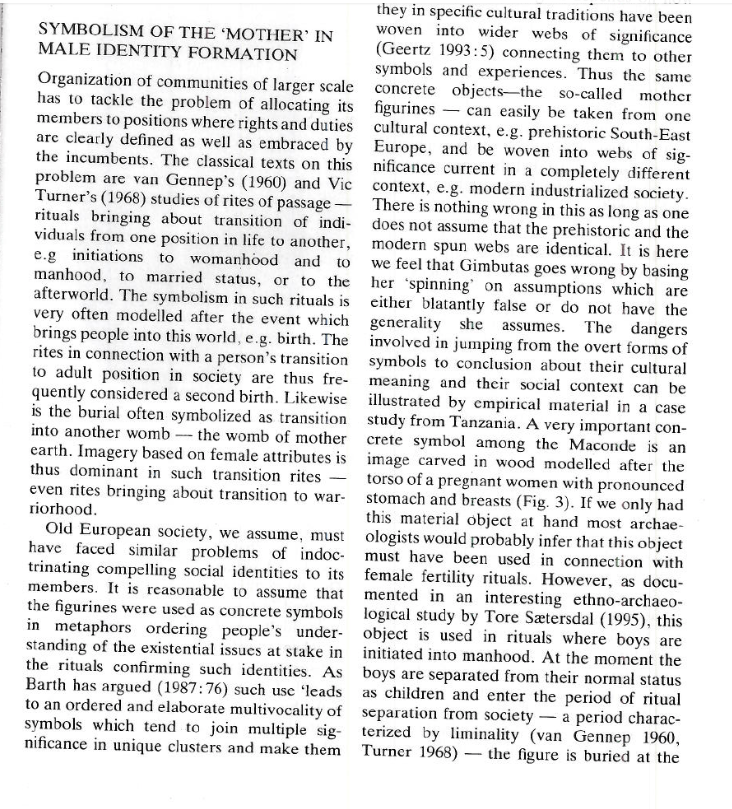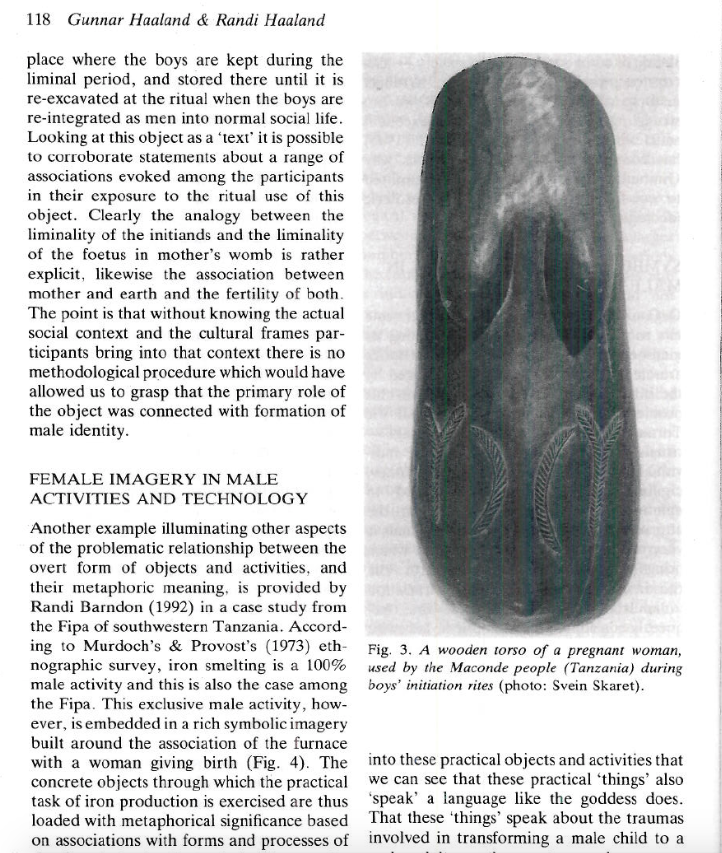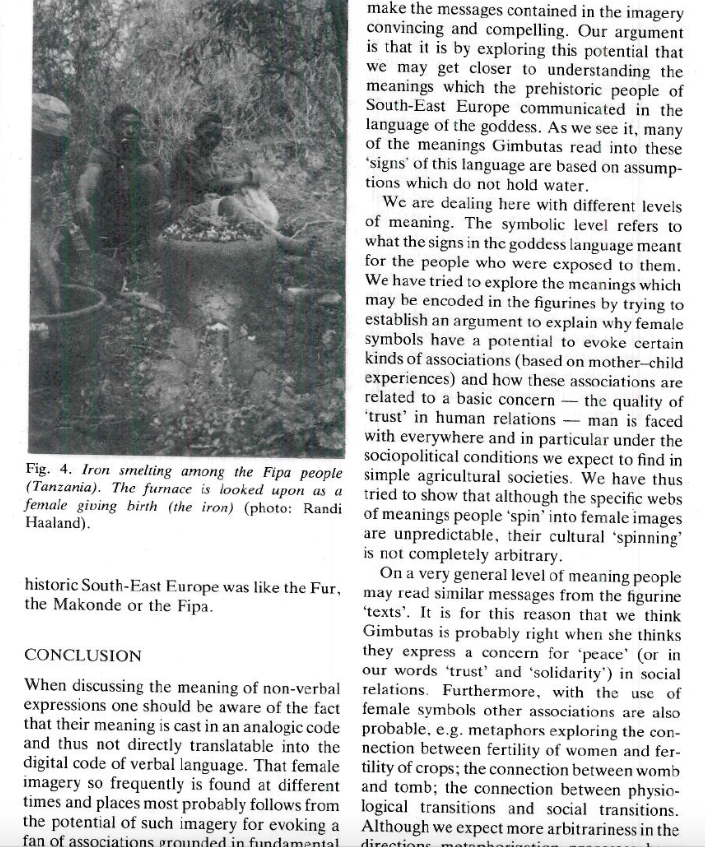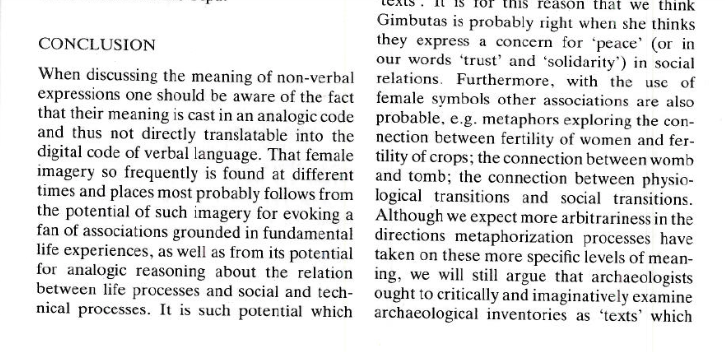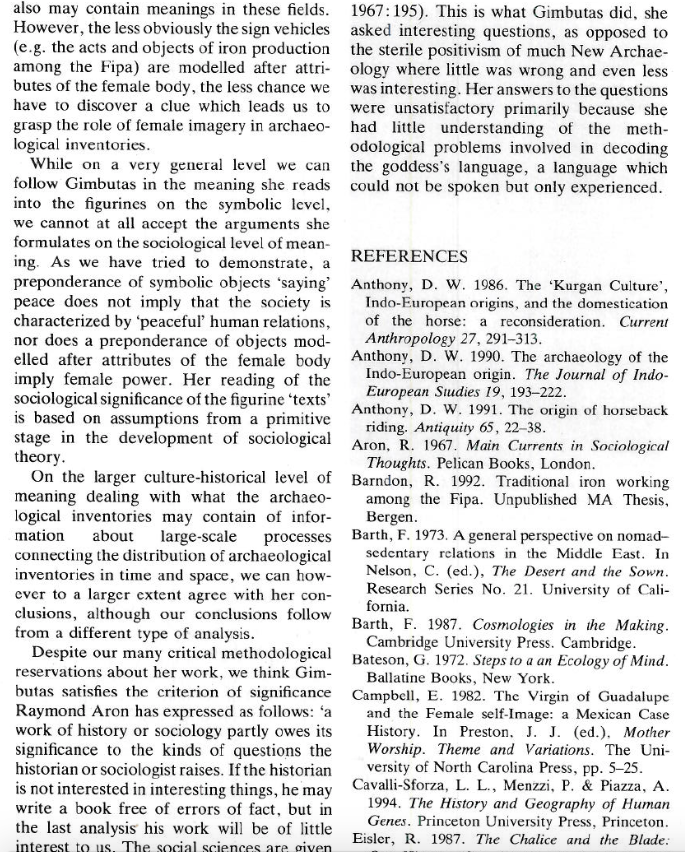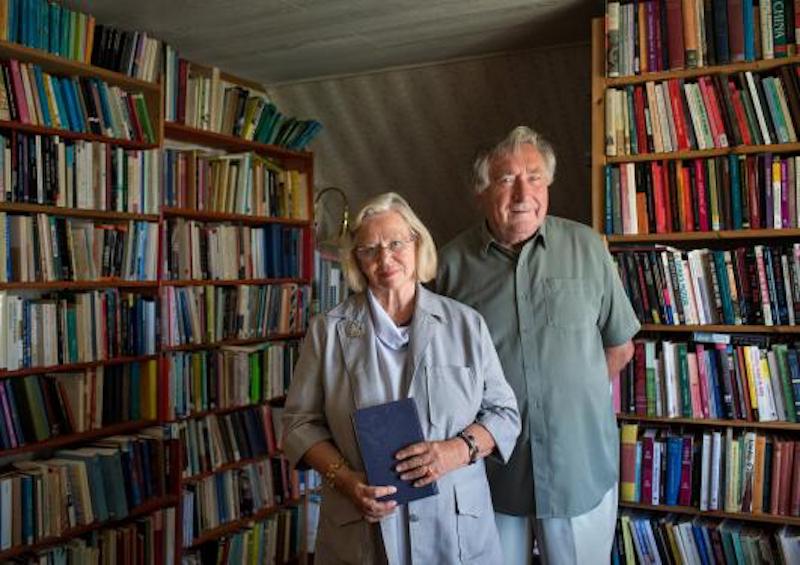
W H O S P E A K S T H E G O D E S S L A N G U A G E ?
Imagination and Method in Archaeological Research
This Article by the Norwegian archaeologists Gunnar ooh Randi Håland, has been recommended to me by one of the Swedish professors in archaeology, to whom I have mailed my question about the professional legitimacy of Elisabeth Beausang in her dismissing Gimbutas´analysis and conclusions as unscientifical in her 15-p paper at the highschool for the education of teachers in Malmö. He is of the opinion that this article by Håland & Håland represents a recommendable unbiased and professionalist carriage in his discipline of archaeology on this matter.
And once again it becomes obvious that the scholars in archaeology, don´t even care to read the works they dismiss, but settle for quoting what they have heard being gossiped about in the telephone game ( reported of by Charlene Spretnak in her article: The Anatomy of Backlash ) among those who are inside the circle of the righteous believers in the Wholy Church of Scientism.
To analyse the following text is just the same waste of time as to go throw the other´s gossip about "matriarchy" and "Mother Goddesses" the authors projecting their own prejudices about women´s inability to wield influence of any importance, and / or the universality of the patriarchy and the inherit necessity of hierarchically non-egalitarian systems in order to achieve higher more complex and elaborate cultures / civilisations, as well as building strawdolls about so called "matriarchalists" that don´t exist IRL, shooting them down because of their theories being used and misused in popular culture. But thats not anymore scientific than to refute Einstein’s theory of relativity because some people wear Einstein T-shirts. Instead it would of course be recommendable to come up with a better and more accurate analysis of the iconographic system presented in the archaeological data.
Besides one would ask why the couple Håland & Håland finds it worthwile making so much fuss about the alleged shortcomings in Gimbutas´ interpretations of the symbolic representations of the figurines (which not at all according to Gimbutas would represent Mother Goddesses all of them as Håland erroneously claims, just repeating Meskells totally unwarrented rejections) and their suggestible function in daily life and ritual, when they at the one hand makes the same interpretations themselves regarding the use of the figurines by the Fur and Maconde people in Africa, and at the other hand conclude their article with the notion that these representations aren´t possible to translatable into words anyhow, but could only be experienced:
"This is what Gimbutas did, she asked interesting questions, ass opposed to the sterile positivism of much New Archaeology where little was wrong but even less interesting. Her answers too the questions were unsatisfactory primarily because she had little understanding of the methodological problems involved in decoding the goddess´language, a language which could not be spoken but only experienced."
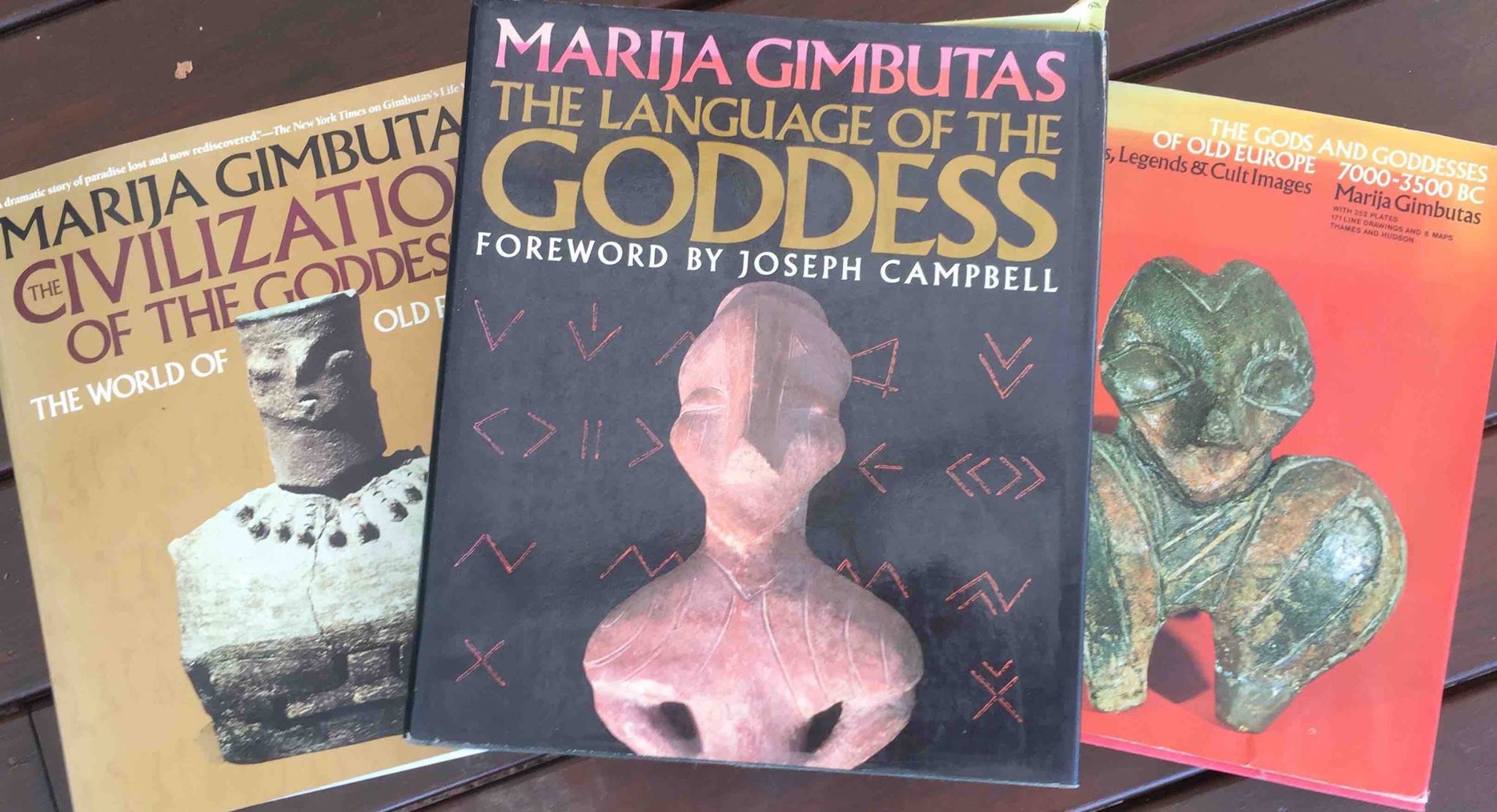
Instead of commenting this substandard kind of erroneous misinterpretation, shooting down strawdolls and / or just mediating sheer gossip, I would highly recommend this article of the real specialist on the subject of mythology: Phil D Kristina Berggren and James B. Harrod 1996, in Journal of Prehistoric Religions X:70-73
U N D E R S T A N D I N G M A R I J A G I M B U T A S, 1996
Kristina Berggren is just one of all the experts in the discipline of mythology who has recognised Meskell´s "critic" suffering from the lack of relevance due to the fact that she is not conversant with Gimbutas´ work, and probably hasn´t even read it, but just listened to the kind of gossip that´s mediated in telephone-game (Se Spretnak!), as all the others of Gimbutas´detractors and in this case also the couple Håland & Håland referring to Meskell. Its really a great shame that the scholars in the discipline of archaeology and anthropology haven´t got more respect for academic skill and prowess, than to dismiss the works of colleges displaying academic professionalism far beyond their own limited realms of understanding and fundamental training, as well as that they even seem to lack respect for fundamental intellectual honesty such as quoting and referring to others work in a correct trustworthy manner. But that this is not so, is already commented by Charlene Spretnak in her article: The Anatomy of Backlash:
"Anyone who assumes that material published under her own name will stand as an inviolable record of her positions might well consider the case of Marija Gimbutas."
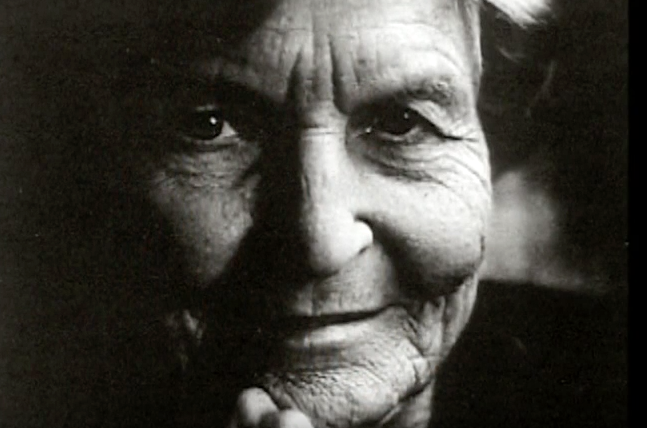
Quoting Håland & Håland:
GIMBUTAS, NEW ARCHAEOLOGY AND PHILOSOPHY OF SCIENCE
Maria Gimbutas published her major works at a time when “New Archaeology” (or procedural archaeology) dominated the archaeological research community, in the USA as well as in most Europe. Generally this school of thought did not favourably receive her argument that people of an Old European Culture were replaced by people of a different cultural tradition - a tradition which she in the archaeological material identified wit the so-called Kurgan tradition, and which she in linguistic material claimed belonged to the family of India European languages. A
Archaeologists rejected her ideas as´`unscientific´ subjective speculations or intuitions - science being believed to be characterised by inductive generalisations from `facts´ according `objective´procedures. However, this naive view of science is rejected by some of the most important natural scientists and philosophers of science. Popper expressed it in the following way: `There is no such thing as a logical method of having new ideas. My view may be expressed by saying that every discovery contains an irrational element or a creative intuition (Popper 1965:32) In a letter to Popper, Einstein talks about the search for highly universal laws from which a picture of the world can be obtained by pure deducation. Such law he says `Can only be reached by intuition based on something like an intellectual love of the objects of experience … the theory cannot be fabricated out of the results of observation … it cannot be invented. (See Popper 1965) The famous mathematician and philosopher Alfred North Whitehead emphasises the importance of speculative Reason and says; `The power of going for thew penetrating idea even if it has not yet worked into any methodology, is what constitutes the progressive force of Reason. (Whitehead 1929:45)
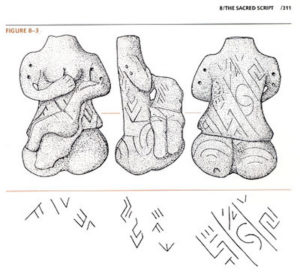 Copy from Marija Gimbutas "The Language of the Goddess"
Copy from Marija Gimbutas "The Language of the Goddess"
Gimbutas has in her written texts clearly formulated some penetrating ideas; which she developed by a productive search for plausible patterns and processes that could make sense of the archaeological material left by the prehistoric peoples of South East Europe, The speculative reason behind this search was based not only on a solid command of the available archaeological material. However, her vast knowledge of the `facts´ is no guarantee that the contexts of the cultural-historical significance constructed (i-e. the meanings she read into the archaeological object ( `text´s) around these `facts hold water. The methodological question is not a question of how she happened to arrive at her ideas, it is a question of how she justifies them. In evaluation her constructions we not only have to scrutinise the `building material´of archaeological and linguistic observations which she uses, we also have to look at explicit and implicit assumptions or principles of constructions on which they are based.
We shall here try to draw critical attention to some anthropological and ecological assumptions implied in her constructions. But first let us summarise some main points in her arguments.
The archaeological material shows that there is a break in the cultural - historical development in South East Europe starting around 4500 BC.
This is caused by three successive waves of invasions from people originating in the steppes between Black Sea and the Caspian Sea
These invaders were carriers of cultural traditions and economic and political organisations dramatically different from those carried by earlier inhabitants of these regions. This change is reflected in the following aspects of culture and society:
There is a change in economy, from sedentary agriculture based on grain this short summary is not at all of the same order as the `meaning´cultivation to pastoral or agro-pastoral nomadism or transhumance.
There is a change in political organisation from matriarchate to patriarchate.
There is a change in language from non-Indo-European languages to Indo-European Languages i.e. the Indo-Europeanization of Europe was brought about by the expansion and political domination of the invaders.
Clearly the meaning communicated in this short summary is not at all the same order as the `meaning´ the prehistoric people read into the objects they surrounded themselves with and which we as culture historians use as building materials for construction of our arguments. The `meaning´communicated in our written texts is based on completely different principles of construction (mainly derived from conceptual schemes developed in disciplines like ecology, genetics, anthropology, linguistics and semiotics, as well as from implicit assumptions and current interests in present society) from cultural codes on the basis of which prehistoric people found the objects meaningful. Most importantly the meaning our readers derive from reading our texts is affected by how they place them in the contemporary disciplinary discourse. In Gellner´s words `Primitive man has lived twice: once in and for himself, and the second time for us, in our reconstructions´. (Gellner 1988:23) There is a vast and probably unbridgeable gap between these two lives. The life is available to us for biases from our representations of the past. This requires that we formulate our constructions of the past in statements which are rich in empirical content (i.e. have a variety of implications) and thereby increases the chances that evidence of different types (from new archaeological finds to generic and linguistic features) may expose our biases. We shall attempt to follow the last alternative.
Now let us look at these points from the perspective of human ecology - a perspective which is almost completely absent in Gimbutas constructions. We shall use this perspective in order to evaluate Gimbuta´s cultural historical argument in relation to an alternative hypothesis presented by Colin Renfrew - a leading scholar of the New Archaeology school. This school claims that it is based on the evolutionary perspectives of `modern, `scientific´ecology. Gimbutas and Renfrew we take as the leading exponents for two dominant archaeological reconstructions of the processes which affected the distribution in time and space of the specific objects contained in the South-East European archaeological record.
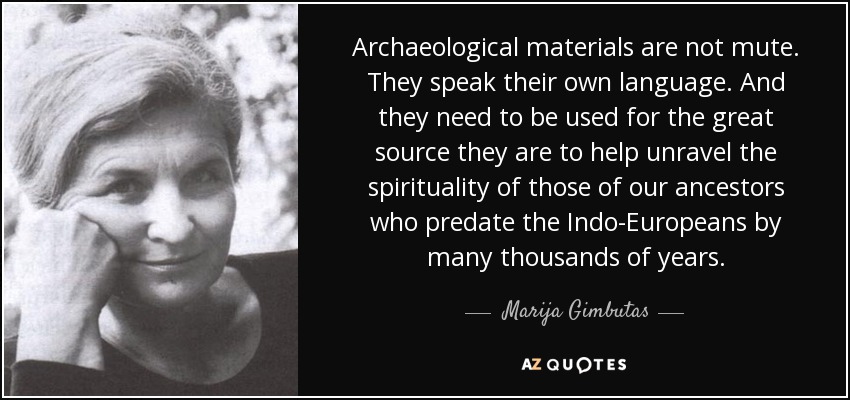
ABOUT THE GODDESSES
Let us for the moment concentrate on the female attributes. We must assume that the people who made the figurines because they wanted to express something which was important for them, that the large number of figurines communicated meanings of great significance to the people who surrounded their life with them.
Now we are back to the figurines as `text´ and the problem of how we can go about trying to interpret this `text´. What assumptions or principles can we draw on in order to justify our speculations about what it was they wanted to express?
We shall try to get closer to what these meanings might have been like by looking at the figurines in the light of comparative ethnographic material and of generalised anthropological insights. In this way it should be easy to identify the points in our arguments which are the weakest.
Many of the figurines have forms modelled after female sexual attributes - vagina and breasts. That sexual associations are evoked among men seeing the figurines may be so, but this does not take us very far because we assume most males in all cultures share such associations without making figurines for ceremonial use.
Alternatively. like Gimbutas, one might think that they were made for female leaders in order to express their power - more or less in the fashion of making statues for kings. In the archaeological material from Old Europe it is however difficult to see any evidence which indicates the presence of centralised polities which such female leaders might have erected power.
(No Gimbutas never expressed anything like this - quite the contrary she stressed the notion of this culture being e g a l i t a r i a n , and not stratified with ruling queens and / or kings, thereby strongly contrasting the kurgan way of structuring society that was to defeat it. )
It is thus difficult to establish plausible statements about the meaning of the figurines, if we assume that they say something about women. We rather think it is more fruitful to ask what may the figurines say about human concerns and relationships and why does an imagery modelled after attributes of the female body convincingly express ways of dealing with them, i.e. what qualities in human relations are they an `image for´.´We shall just draw attention to some of these relations and concerns which spring to mind from reading ethnographic fieldwork among simple shifting cultivators. Before we go unto this let us return for a moment to the emergence of agriculture and its social concomitances:
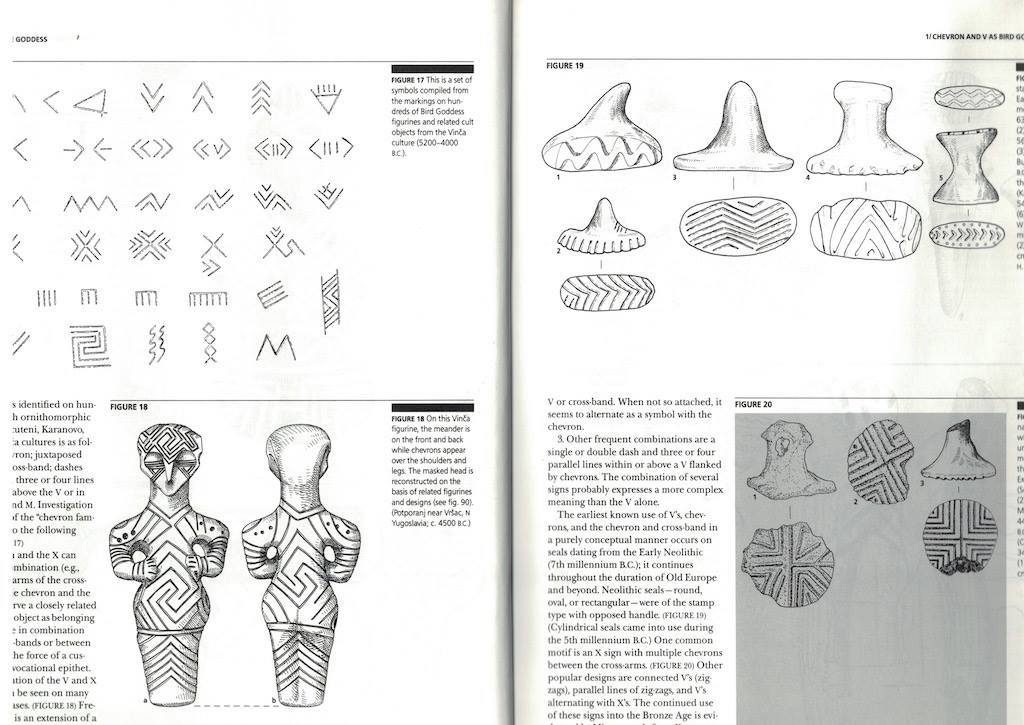
Copy from Marija Gimbutas "The Language of the Goddess"
"Gimbutas recognized that the Neolithic and Copper Age settlements of southeastern Europe were not primitive versions of later Bronze Age cultures. Instead, these earlier societies were radically different in numerous aspects from what came later in terms of:
1)burial patterns (roughly egalitarian between males and females),
2) the use of a sophisticated symbol system (evidence of a systematic use of linear signs for the communication of ideas),
3) widespread evidence of domestic rituals (with a vast outpouring of elegant ritual ceramics),
4) the continual creation and use of anthropomorphic and zoomorphic figurines (the vast majority being female),
5) the absence of weapons and organized warfare."
Here you can read the whole text:
